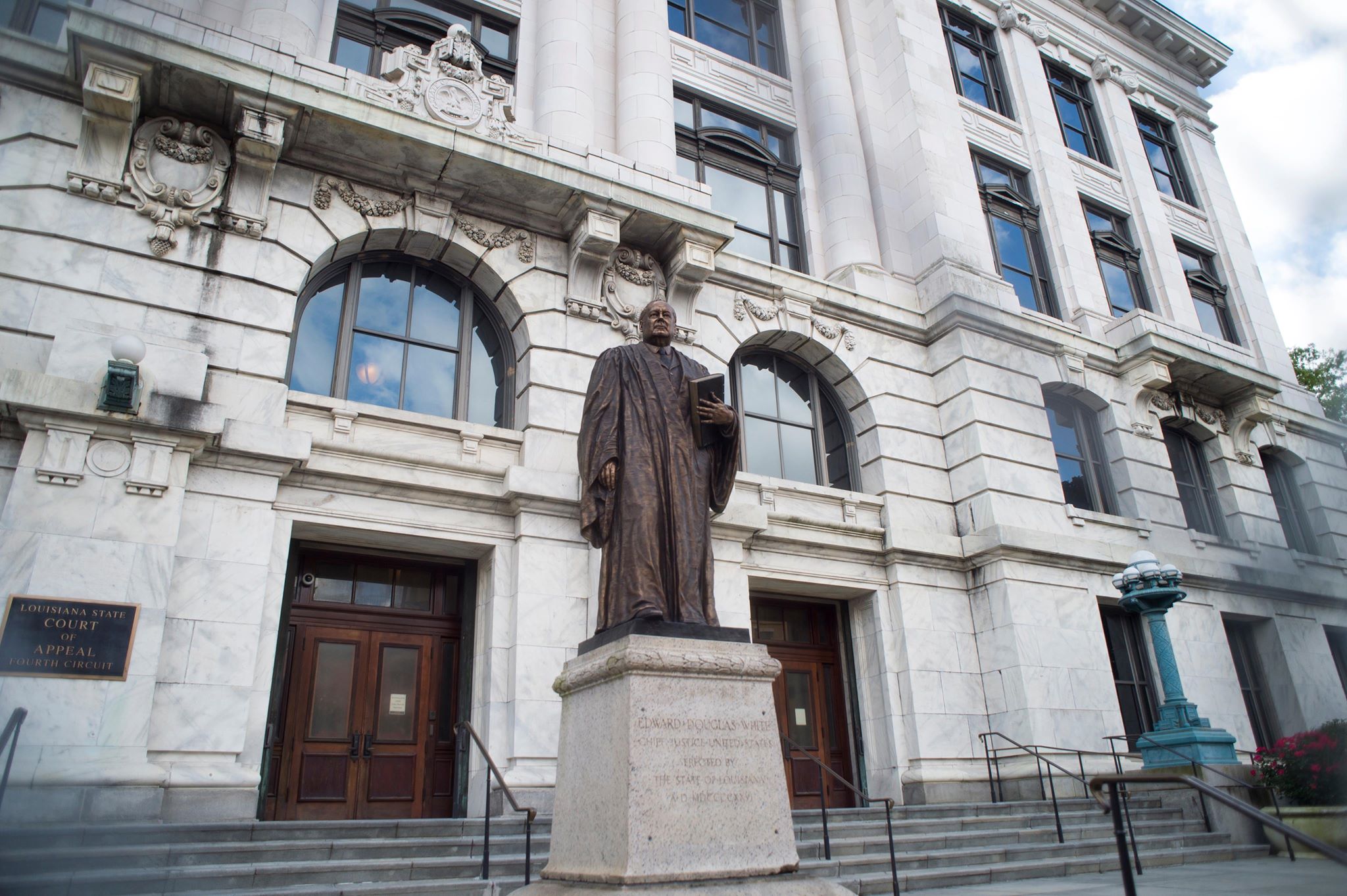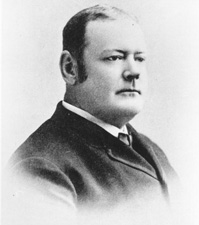|
David N. Thompson
David Newton Thompson (January 7, 1859 – November 28, 1945) was a justice of the Louisiana Supreme Court from December 5, 1922, to December 1, 1930. Born in Harrisonburg, Catahoula Parish, Louisiana, Thompson was a Deputy Clerk of Court and Recorder of Deeds and Mortgages before serving as District Attorney for the Eighth Judicial District of Louisiana from 1892 to 1900. He was then a judge of that district until 1908, and judge of the state's Court of Appeal for the Second Circuit from 1908 to 1922. He served on the Louisiana Supreme Court for eight years, from 1922 to 1930. Thompson died in his home, in Monroe, Louisiana Monroe (historically french: Poste-du-Ouachita) is the eighth-largest city in the U.S. state of Louisiana, and parish seat of Ouachita Parish. With a 2020 census-tabulated population of 47,702, it is the principal city of the Monroe metropolita ..., at the age of 86, following a long illness."Former High Court Justice, 86, Dies", ''The Alexandria Town Tal ... [...More Info...] [...Related Items...] OR: [Wikipedia] [Google] [Baidu] |
Louisiana Supreme Court
The Supreme Court of Louisiana (french: Cour suprême de Louisiane) is the highest court and court of last resort in the U.S. state of Louisiana. The modern Supreme Court, composed of seven justices, meets in the French Quarter of New Orleans. The Supreme Court, and Louisiana state law, are historically based in the colonial governments of France and Spain during the 18th century. The current Supreme Court traces its roots back to these beginnings. French and Spanish colonial government Under the colonial governments of France and Spain, the courts of what is now Louisiana existed in several different forms. In 1712, a charter granted by France created a Superior Council with executive and judicial function which functioned as a court of last resort in both civil and criminal cases. In 1769, Louisiana (New France) became Louisiana (New Spain), and the Superior Council was replaced with the '' Cabildo''. The colonial Governor held the power of final authority in legal cases. ... [...More Info...] [...Related Items...] OR: [Wikipedia] [Google] [Baidu] |
Harrisonburg, Louisiana
Harrisonburg is a village in and the parish seat of Catahoula Parish, Louisiana, United States. The population was 348 as of the 2010 census, down from 746 in 2000. Riley J. Wilson, who held Louisiana's 5th congressional district seat from 1915 to 1937, resided in Harrisonburg, where he was principal of Harrisonburg High School and then an attorney, district attorney, and state district court judge prior to his election to Congress. History Harrisonburg was named for the Harrison family of Virginia. Fort Beauregard, located on a bluff in the northern corner of the village, was a Confederate stronghold during the American Civil War. In 1863, the fort successfully defended Harrisonburg from the attack of four Union gunboats coming from the Black River to the Ouachita River. After four days of bombardment, little damage was done, and the gunboats retired down river. Harrisonburg and fort were evacuated before Brig. General Crocker's considerable naval and army forces arrived ... [...More Info...] [...Related Items...] OR: [Wikipedia] [Google] [Baidu] |
Catahoula Parish, Louisiana
Catahoula Parish (french: Paroisse de Catahoula) is a parish in the U.S. state of Louisiana. As of the 2010 census, the population was 10,407. Its seat is Harrisonburg, on the Ouachita River. The parish was formed in 1808, shortly after the United States acquired this territory in the Louisiana Purchase of 1803. History Prehistory Catahoula Parish was the home to many succeeding Native American groups in the thousands of years before European settlements began. Peoples of the Marksville culture, Troyville culture, Coles Creek culture and Plaquemine culture built villages and mound sites throughout the area. Notable examples include Peck Mounds, and the Troyville Earthworks. The Troyville Earthworks have components dating from 100 BCE to 700 CE during the Baytown to the Troyville-Coles Creek periods. It once had the tallest mound in Louisiana at in height; it was the second-tallest mound in North America (after Monk's Mound at Cahokia Mounds). This mound was destroyed to ... [...More Info...] [...Related Items...] OR: [Wikipedia] [Google] [Baidu] |
Monroe, Louisiana
Monroe (historically french: Poste-du-Ouachita) is the eighth-largest city in the U.S. state of Louisiana, and parish seat of Ouachita Parish. With a 2020 census-tabulated population of 47,702, it is the principal city of the Monroe metropolitan statistical area, the second-largest metropolitan area in North Louisiana. Etymology As governor of Louisiana, Esteban Rodríguez Miró had ''Fort Miro'' built in 1791. Fort Miro changed its name to Monroe to commemorate the first arrival of the steamboat ''James Monroe'' in the spring of 1820. The ship's arrival was the single event, in the minds of local residents, that transformed the outpost into a town. Credit for the name is indirectly given to James Monroe of Virginia, the fifth President of the United States, for whom the ship was named. The steamboat is depicted in a mural at the main branch of the Ouachita Parish Public Library. History Early history–late 20th century Monroe's origins date back to the Spanish colonial ... [...More Info...] [...Related Items...] OR: [Wikipedia] [Google] [Baidu] |
List Of Justices Of The Louisiana Supreme Court
Following is a list of justices of the Louisiana Supreme Court and their years of service. Territory of Orleans (1804–1812) (three judges) * John Bartow Prevost 1804–1806 * Ephraim Kirby 1804 (died en route to New Orleans) *Peter Stephen Du Ponceau 1804 (declined Jefferson's appointment) * William Sprigg 1806–1808 * George Mathews Jr. 1806–1813 * Joshua Lewis 1807–1813 * John Thompson 1808–1810 * Francois Xavier Martin 1810–1813 State of Louisiana (1813 to the present) Constitution of 1812 (three to five judges appointed by the governor) *Dominic Augustin Hall 1813, Presiding Judge *Pierre Derbigny 1813–1820 * George Mathews Jr. 1813–1836, Presiding Judge * Francois Xavier Martin 1815–1836; *Alexander Porter 1821–1833 *Henry Adams Bullard 1834–1839 * Francois Xavier Martin 1836–1846, Presiding Judge *Henry Carleton 1837–1839 *Pierre Adolphe Rost 1839 *George Eustis Sr. 1839 *George Strawbridge 1839 *Rice Garland 1840–1846 *Alonzo Morphy 1839–1846 * ... [...More Info...] [...Related Items...] OR: [Wikipedia] [Google] [Baidu] |
Frederick M
Frederick may refer to: People * Frederick (given name), the name Nobility Anhalt-Harzgerode *Frederick, Prince of Anhalt-Harzgerode (1613–1670) Austria * Frederick I, Duke of Austria (Babenberg), Duke of Austria from 1195 to 1198 * Frederick II, Duke of Austria (1219–1246), last Duke of Austria from the Babenberg dynasty * Frederick the Fair (Frederick I of Austria (Habsburg), 1286–1330), Duke of Austria and King of the Romans Baden * Frederick I, Grand Duke of Baden (1826–1907), Grand Duke of Baden * Frederick II, Grand Duke of Baden (1857–1928), Grand Duke of Baden Bohemia * Frederick, Duke of Bohemia (died 1189), Duke of Olomouc and Bohemia Britain * Frederick, Prince of Wales (1707–1751), eldest son of King George II of Great Britain Brandenburg/Prussia * Frederick I, Elector of Brandenburg (1371–1440), also known as Frederick VI, Burgrave of Nuremberg * Frederick II, Elector of Brandenburg (1413–1470), Margrave of Brandenburg * Frederick William, Elector ... [...More Info...] [...Related Items...] OR: [Wikipedia] [Google] [Baidu] |
1859 Births
Events January–March * January 21 – José Mariano Salas (1797–1867) becomes Conservative interim President of Mexico. * January 24 ( O. S.) – Wallachia and Moldavia are united under Alexandru Ioan Cuza (Romania since 1866, final unification takes place on December 1, 1918; Transylvania and other regions are still missing at that time). * January 28 – The city of Olympia is incorporated in the Washington Territory of the United States of America. * February 2 – Miguel Miramón (1832–1867) becomes Conservative interim President of Mexico. * February 4 – German scholar Constantin von Tischendorf rediscovers the ''Codex Sinaiticus'', a 4th-century uncial manuscript of the Greek Bible, in Saint Catherine's Monastery on the foot of Mount Sinai, in the Khedivate of Egypt. * February 14 – Oregon is admitted as the 33rd U.S. state. * February 12 – The Mekteb-i Mülkiye School is founded in the Ottoman Empire. * February 17 – French naval forces under Char ... [...More Info...] [...Related Items...] OR: [Wikipedia] [Google] [Baidu] |
1945 Deaths
1945 marked the end of World War II and the fall of Nazi Germany and the Empire of Japan. It is also the only year in which Nuclear weapon, nuclear weapons Atomic bombings of Hiroshima and Nagasaki, have been used in combat. Events Below, the events of World War II have the "WWII" prefix. January * January 1 – WWII: ** Nazi Germany, Germany begins Operation Bodenplatte, an attempt by the ''Luftwaffe'' to cripple Allies of World War II, Allied air forces in the Low Countries. ** Chenogne massacre: German prisoners are allegedly killed by American forces near the village of Chenogne, Belgium. * January 6 – WWII: A German offensive recaptures Esztergom, Kingdom of Hungary (1920–1946), Hungary from the Russians. * January 12 – WWII: The Soviet Union begins the Vistula–Oder Offensive in Eastern Europe, against the German Army (Wehrmacht), German Army. * January 13 – WWII: The Soviet Union begins the East Prussian Offensive, to eliminate German forces in East Pruss ... [...More Info...] [...Related Items...] OR: [Wikipedia] [Google] [Baidu] |
People From Harrisonburg, Louisiana
A person ( : people) is a being that has certain capacities or attributes such as reason, morality, consciousness or self-consciousness, and being a part of a culturally established form of social relations such as kinship, ownership of property, or legal responsibility. The defining features of personhood and, consequently, what makes a person count as a person, differ widely among cultures and contexts. In addition to the question of personhood, of what makes a being count as a person to begin with, there are further questions about personal identity and self: both about what makes any particular person that particular person instead of another, and about what makes a person at one time the same person as they were or will be at another time despite any intervening changes. The plural form "people" is often used to refer to an entire nation or ethnic group (as in "a people"), and this was the original meaning of the word; it subsequently acquired its use as a plural form of per ... [...More Info...] [...Related Items...] OR: [Wikipedia] [Google] [Baidu] |
People From Monroe, Louisiana
A person ( : people) is a being that has certain capacities or attributes such as reason, morality, consciousness or self-consciousness, and being a part of a culturally established form of social relations such as kinship, ownership of property, or legal responsibility. The defining features of personhood and, consequently, what makes a person count as a person, differ widely among cultures and contexts. In addition to the question of personhood, of what makes a being count as a person to begin with, there are further questions about personal identity and self: both about what makes any particular person that particular person instead of another, and about what makes a person at one time the same person as they were or will be at another time despite any intervening changes. The plural form "people" is often used to refer to an entire nation or ethnic group (as in "a people"), and this was the original meaning of the word; it subsequently acquired its use as a plural form of per ... [...More Info...] [...Related Items...] OR: [Wikipedia] [Google] [Baidu] |





_1938.jpg)